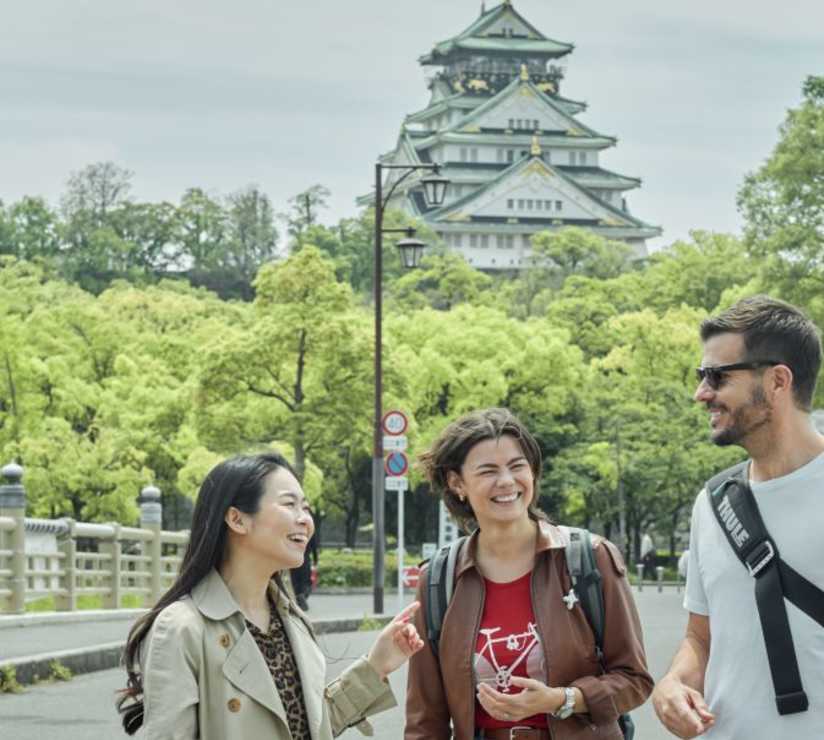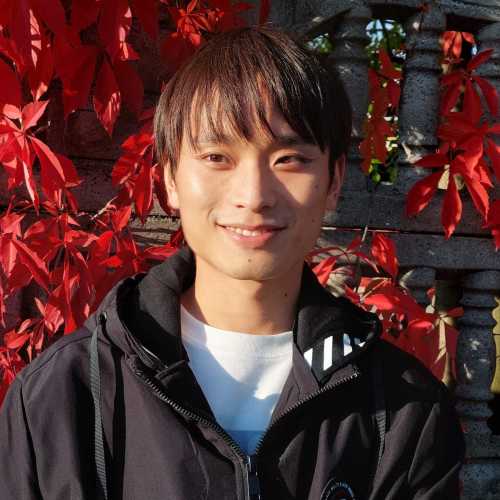Table Of Contents
- The Truth About This City
- Getting Your Bearings: Where Osaka Lives
- The Castle Question: More Than Instagram Fodder
- Beyond the Obvious Attractions
- Umeda Sky Building: Architecture That Matters
- Osaka Aquarium: Beyond the Whale Sharks
- Abeno Harukas: Japan's Vertical Ambition
- The Real Food Story
- Treasures That Locals Visit
- Green Spaces in an Urban Environment
- Museums That Tell Real Stories
- Transportation as Cultural Experience
- Japanese Culture in Urban Context
- The Osaka Bay Connection
- Tallest Buildings and Urban Ambition
- Beyond Tourist Expectations
- Final Observations
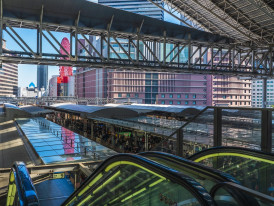
Early morning commuters at Osaka Station with dramatic lighting. Image by
The Truth About This City
I've lived in Osaka, Japan, my entire life, watching it transform from what my grandmother called "the merchant's playground" into something that tries too hard to impress visitors. But they don't tell you in guidebooks: Osaka isn't performing for anyone. It's just being itself, loudly and unapologetically.
Most people arrive at Kansai International Airport expecting neon lights and cartoon characters. They get that, sure. But they miss the conversations over steaming bowls at 2 am, the way old men argue about baseball scores outside convenience stores, and how the city breathes differently after midnight.
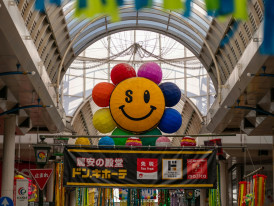
Traditional covered shopping arcade near a local train station. Photo by Kouji Tsuru on Unsplash
Getting Your Bearings: Where Osaka Lives
Understanding Central Osaka Through Local Eyes
Central Osaka isn't one thing; it's five distinct personalities arguing. Umeda thinks it's sophisticated. Namba believes it's the entertainment capital. The Tennoji area knows it's the real working heart. Osaka Station connects everything while staying neutral.
The mistake most people make is treating Osaka City like a checklist. They rush from Osaka Castle to Universal Studios Japan, missing the spaces between where actual life happens.
Train Stations as Cultural Indicators
Every neighborhood in Japan reveals itself through its train stations. Shin Osaka Station serves the bullet train crowd; efficient, sterile, forgettable. But walk five minutes to any local station and you'll find the real character.
Namba Station pulses with arcade games and late-night energy. Stations in residential areas smell like yakitori and sound like decades-old conversations.
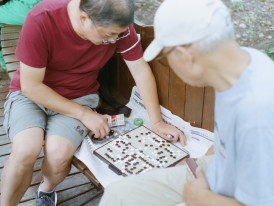
Local residents playing traditional games in the castle park. Photo by Derek Lee on Unsplash
The Castle Question: More Than Instagram Fodder
What Osaka Castle Actually Means
Here's my unpopular opinion about Osaka Castle: the building itself matters less than what happens around it. The concrete reconstruction from the 1930s isn't historically authentic, but the surrounding park reveals something genuine about how this city values space.
During cherry blossom season, the castle grounds become a temporary village. Families claim spots at dawn, office workers escape for lunch breaks, and elderly couples sit quietly watching the world change around them.
The Park Around the Castle
The surrounding park tells Osaka's real story better than any museum placard. Watch how locals use these green spaces, not as tourist attractions, but as extensions of their living rooms. Children play games their grandparents invented. Teenagers practice dance routines. Salarymen nap under trees.
This is where you understand that Osaka Castle exists for residents first, visitors second.
Looking for a private city experience in Osaka?
Explore the city with a local who plans a private day just for you; no groups, no scripts.

Guests on the Jurassic Park water ride with realistic dinosaur animatronics. Image by Kazkar from Pixabay
Beyond the Obvious Attractions
Universal Studios Japan: The Local Perspective
Universal Studios Japan draws millions, but here's what we know: go on weekdays, arrive early, and understand that the Wizarding World of Harry Potter will be crowded regardless. The real insight isn't about avoiding lines but watching how Japanese families experience American entertainment.
The attention to detail in the Harry Potter sections reflects something essentially Japanese: the belief that if you're going to do something, do it completely. Even the food vendors understand this philosophy.
The Jurassic Park Experience
The Jurassic Park ride gets overlooked because everyone focuses on newer attractions. But it showcases Universal's original ambition: creating experiences that feel real enough to forget they're manufactured.
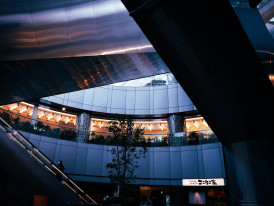
Traditional underground food court beneath Umeda Sky Building.Photo by CHE-CHI LIN on Unsplash
Umeda Sky Building: Architecture That Matters
Why Umeda Sky Building Works
The Umeda Sky Building succeeds because it doesn't apologize for being dramatic. Two towers connected by a floating observatory? Absurd. But step onto that observation deck and suddenly Osaka spreads below you like a living map.
The mesmerizing view from the top floor reveals the city's geography: how neighborhoods flow together, where the water influences development, and how train lines create community boundaries.
The Building's Underground Secrets
Most visitors never explore the basement of the Umeda Sky Building, which houses one of Osaka's most authentic food courts. This isn't tourist food; it's where office workers from nearby buildings eat lunch.
The contrast between the architectural drama above and the practical dining below captures something essential about this city's personality.
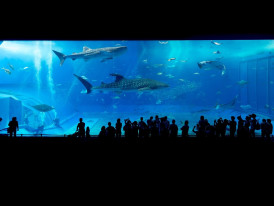
Large whale shark swimming past amazed visitors at the aquarium. Image by Jordy Meow from Pixabay
Osaka Aquarium: Beyond the Whale Sharks
What Makes the Aquarium Special
The Osaka Aquarium Kaiyukan gets attention for its whale sharks, but the real magic happens in the smaller exhibits. The jellyfish section creates an almost meditative experience. Marine life from Osaka Bay shares space with creatures from across the Pacific.
The aquarium's design, a spiral descent through different ocean levels, mirrors how you experience Osaka itself: layer by layer, a deeper understanding with each level.
The Whale Sharks and Their Meaning
Yes, the whale sharks are impressive. But watch the faces of Japanese children seeing them for the first time. The aquarium succeeds because it creates genuine wonder, not just photo opportunities.
The engineering required to maintain these massive tanks reflects the same precision that makes bullet trains run on time and keeps this entire city functioning.
What if your day in Osaka was planned by someone who knows it — and you?
City Unscripted matches you with a local host who creates a private experience based on your interests, not a set route.
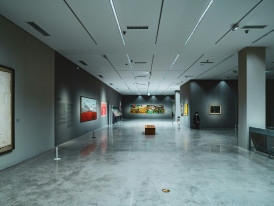
Modern art gallery interior within Abeno Harukas. Photo by zero take on Unsplash
Abeno Harukas: Japan's Vertical Ambition
The Tallest Building Experience
Abeno Harukas is Japan's tallest building, but that's not why it matters. The building represents Osaka's determination to remain relevant in a country where Tokyo gets most of the attention.
The observation deck offers views that extend to Kyoto on clear days. You can see how Osaka fits into the larger Kansai region; not as an isolated city, but as part of a connected urban fabric.
Shopping and Culture Combined
The building combines one of Japan's largest department stores with art galleries, restaurants, and hotel space. This mixed-use approach reflects how modern Japanese cities integrate commerce with culture.
The art museum on the upper floors often gets overlooked, but it showcases contemporary Japanese artists alongside international exhibitions.

Small traditional kushikatsu restaurant with customers eating at the counter.
The Real Food Story
Beyond Takoyaki and Tourist Traps
Everyone knows about takoyaki and okonomiyaki; those savory pancakes with shredded cabbage and special sauce. But Osaka's food culture runs deeper than street snacks.
Visit traditional restaurants in residential neighborhoods where three generations of the same family perfect one dish. Try restaurants that have served the same grilled skewers for fifty years, where the special mold that creates the sauce is passed down like a family heirloom.
Japanese Cuisine's Hidden Layers
Japanese cuisine in Osaka reflects the city's merchant history. Dishes developed to satisfy traders, workers, and travelers; practical food that happens to be delicious.
The best meals happen in places that don't look impressive from the outside. Look for restaurants with green onions hanging in windows, places where salarymen eat standing up, counters where conversation flows between strangers.
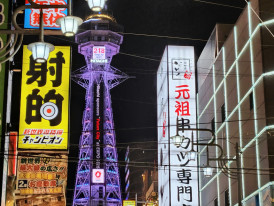
Tsutenkaku Tower surrounded by traditional shops and neon signs. Photo by Da-shika on Unsplash
Treasures That Locals Visit
Orange Street and Independent Culture
Orange Street represents Osaka's independent spirit. Small galleries, vintage clothing stores, cafes that roast their own coffee; this area feels authentic because it developed organically, not through city planning.
The shopping arcade here operates differently from major commercial areas. Store owners know their customers personally. Conversations happen across generations.
Shin Sekai: Old Japan Meets Modern Reality
Shin Sekai, literally "New World," preserves an older version of urban Japan. The Tsutenkaku Tower stands as a reminder of early 20th-century optimism, when this neighborhood represented the future.
Today, it offers something rarer: unpretentious authenticity. Game parlors, small restaurants, and shops that haven't changed their storefronts in decades.
Tip
We match you with the right host, not just any guide.Want to experience the real Osaka with someone who lives there?
A fully private experience, planned and led by a local host who tailors the day to you
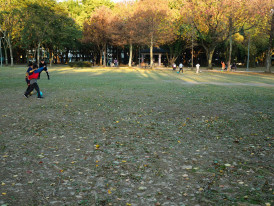
Small neighborhood park with local residents exercising in the early morning. small neighborhood park with local residents exercising in the early morning osaka
Green Spaces in an Urban Environment
Expo Park's Dual Purpose
Expo Park existed because of the 1970 World's Fair, but it survives because Osaka residents claim it as their own. Families use it for weekend picnics, and students study under pavilion structures designed by famous architects.
The park demonstrates how green spaces function in dense Japanese cities: not as decoration but as necessary breathing room.
Small Parks, Big Impact
The most important green spaces in Osaka aren't the famous ones. Small neighborhood parks tucked between buildings serve as community centers, meeting places, and refuges from urban intensity.
These spaces reveal how Japanese urban planning prioritizes human scale even in dense environments.
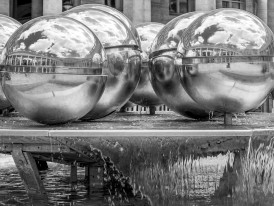
Contemporary art installation reflecting urban themes in an Osaka art museum. Image by Tom from Pixabay
Museums That Tell Real Stories
Osaka Museum Perspectives
The Osaka Museum system includes everything from contemporary art to historical artifacts, but the most interesting exhibitions often happen in smaller, specialized museums.
Museums dedicated to housing history, traditional crafts, or specific industries reveal how this city developed its unique character. The best museum experiences happen when you stumble upon something unexpected.
Art Museum Discoveries
Art museums in Osaka often surprise visitors with their contemporary focus. Japanese artists working with international influences, experimental installations that respond to urban life.
These spaces provide context for understanding how Osaka fits into global cultural conversations while maintaining its distinctive voice.
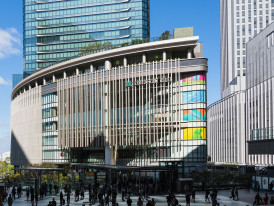
Rush hour crowds flowing through Grand Front Osaka's multi-level transit connections.Image by
Transportation as Cultural Experience
Understanding Osaka Through Movement
The way people move through Osaka reveals the city's social rhythms. Rush hour patterns, weekend migrations to shopping districts, late-night dispersals from entertainment areas.
Grand Front Osaka, connected directly to the train infrastructure, represents how modern Japanese cities integrate transportation with commercial and cultural space.
One-Hour Train Ride Possibilities
A one-hour train ride from central Osaka reaches mountains, beaches, historical sites, and other major cities. This connectivity shapes how locals think about space and time.
Day trip possibilities from Osaka include traditional villages, temple complexes, coastal areas, and urban centers with completely different personalities.
Ready to plan your perfect day in Osaka?
Start your experience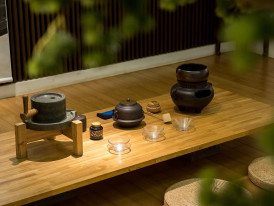
Traditional tea ceremony taking place in a modern urban setting. Image by proths from Pixabay
Japanese Culture in Urban Context
Tea Ceremony in Modern Settings
Traditional Japanese culture exists alongside contemporary life in ways that might surprise visitors. Tea ceremony practices continue in modern buildings. Shrine festivals happen surrounded by skyscrapers.
Integrating old and new reflects Osaka's practical approach to cultural preservation: keep what works, adapt what needs changing.
Shrine Life in City Context
Neighborhood shrines maintain their spiritual and social functions even as the city grows around them. These spaces anchor communities, provide continuity across generations.
Festival seasons transform ordinary streets into celebration spaces, revealing community networks that exist beneath the city's surface.
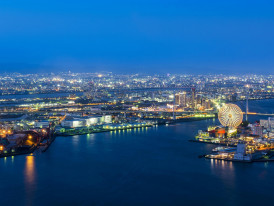
Osaka Bay waterfront showing mix of industrial, recreational, and residential development.Photo by Pixabay
The Osaka Bay Connection
How Water Shapes the City
Osaka Bay influences everything from weather patterns to food culture to industrial development. The port areas reveal the city's historical connections to trade, transportation, and international exchange.
Waterfront development in recent decades has created new recreational spaces while maintaining working port functions.
Marine Life and Urban Life
The relationship between marine life in Osaka Bay and the city's aquarium creates an interesting loop, with artificial environments that educate people about natural systems that exist nearby.
This connection between urban experience and natural environment reflects broader themes in Japanese environmental thinking.
![[IMAGE: Wild birds feeding in Osaka Bay with city skyline in the background. Filename: bay-wildlife-cityscape.jpg]]()
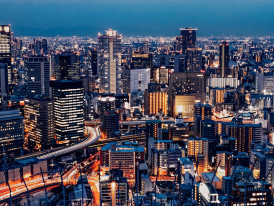
Aerial view showing the cluster of tallest buildings in central Osaka. Image by xegxef from Pixabay
Tallest Buildings and Urban Ambition
Vertical Development Patterns
The cluster of tallest buildings in Osaka reflects the city's ambitions and practical constraints. Height restrictions, earthquake considerations, and neighborhood character all influence development patterns.
From observation decks, you can read the city's growth patterns, where expansion happened, how transportation influenced development, and where future growth might occur.
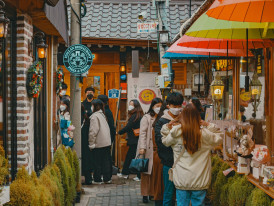
Locals and visitors sharing the same spaces naturally in central Osaka. Photo by (っ◔◡◔)っ Clement
Beyond Tourist Expectations
What Many Visitors Miss
Many visitors to Osaka focus on major attractions while missing the texture of daily life. The best experiences often happen between planned activities: conversations with strangers, accidental discoveries, moments of unexpected beauty.
Traditional Osaka sightseeing approaches treat the city like a museum where you check items off a list. But Osaka rewards a different kind of attention; one that notices how spaces are actually used, how communities form around convenience stores, how the rhythm of daily life creates its own entertainment.
The most authentic Osaka experiences come from paying attention to ordinary moments that reveal extraordinary depth.
The Real Attraction List
If someone forced me to create a list of top attractions, I'd include the obvious Osaka sights but emphasize how to experience them thoughtfully. Osaka Castle for its park life, not just its architecture. The aquarium for wonder, not just whale sharks. Shopping districts for community observation, not just commerce.
The real attraction is the city itself; how it functions, how people interact, how tradition and change negotiate their relationship daily.
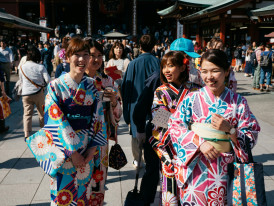
Multi-generational group enjoying time together in a typical Osaka setting. Photo by Max Anderson on Unsplash
Final Observations
What Osaka Teaches
Living in this city teaches you that authenticity isn't about avoiding crowds or finding secret places. It's about understanding what you're looking at, why it matters to the people who call this place home.
Osaka doesn't hide its commercial nature or apologize for its ambitions. The city succeeds because it remains essentially itself while adapting to changing circumstances.
The entire city functions as a living demonstration of how Japanese culture processes change, maintains continuity, and creates spaces where different generations, backgrounds, and interests can coexist.
What You Take With You
The best souvenir from Osaka isn't something you buy; it's an understanding of how cities can maintain character while embracing change, how food culture reflects community values. How public spaces can serve multiple purposes simultaneously.
This understanding changes how you see other places, how you appreciate the complexity of urban life, and how you recognize authenticity when you encounter it.
Osaka doesn't need to impress anyone. It just needs to keep being itself, which turns out to be impressive enough.
What if your day in Osaka was planned by someone who knows it — and you?
City Unscripted matches you with a local host who creates a private experience based on your interests, not a set route.
Want to experience the real Osaka with someone who lives there?
A fully private experience, planned and led by a local host who tailors the day to you
